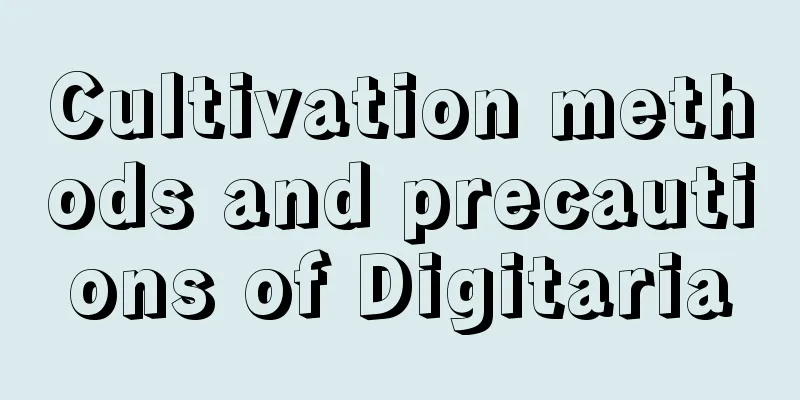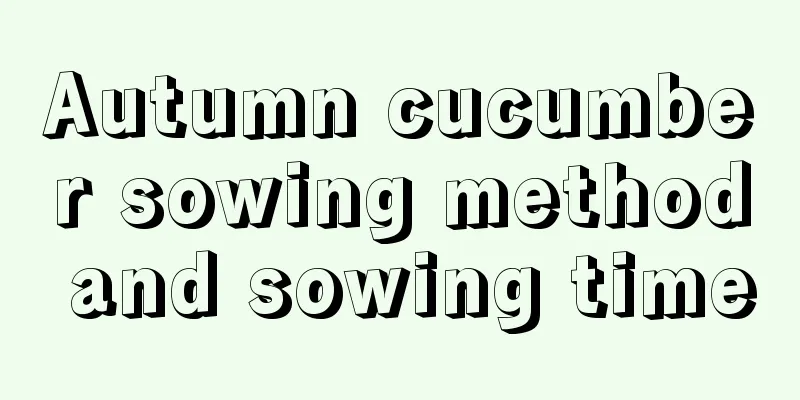Cultivation methods and precautions of Digitaria

How to cultivate Centella asiaticaLight and temperatureThe growth of the Chinese horse hoof needs sufficient light and more exposure to sunlight every day so that the Chinese horse hoof can grow lush and green. The Chinese horse hoof has a growth habit of liking light but being shade-tolerant. It can grow in semi-shaded and humid places and has low temperature requirements, but it will be frostbitten when the temperature drops to -6℃ to -7℃. Water and fertilizer managementDuring its growth, the Chinese horsetail requires regular irrigation and moderate fertilization. After the young plants of Dichondra divaricata emerge from the soil, they should be watered 1 to 2 times a week, and the irrigation frequency should be increased during the dry season. After the plant matures, watering should be controlled in early spring and early winter. During the peak growing season of the Spring Festival, the watering frequency should be determined according to the soil quality. Horse hoof likes nitrogen fertilizer. Usually, when it rains and waters, you should apply nitrogen fertilizer in moderation. After fertilizing, you should water the plant plenty of times to reduce the degree of leaf burns. Alternatively, fertilize first, then sweep the fertilizer under the leaves and combine with watering. At the same time, no fertilizer should be applied during the high temperatures in summer. soilThe soil requirements of the Chinese horsetail are not very strict. As long as the drainage conditions are moderate, it can be planted on sandy loam and clay. It mostly grows in fields or mountains with fertile soil. Precautions for breeding of horseshoe goldWeed removalWhen using Dianthus japonicus for lawn greening, weeds will appear because it takes some time to grow before it can be completely covered. If there are fewer weeds, they can be removed manually. If there are more weeds, they can be sprayed with herbicides. How to breed horseshoe goldThe common methods of propagation of Dichondra divaricata are sowing and division. Disease and insect pest control of Dichondra divaricataThe disease resistance of the Aquilegia serrata lawn is strong, with only white rot and a small amount of leaf spot mildew occurring. It will also cause rust, Sclerotinia disease. The main pests of the water chestnut lawn are the white grub larvae of the scarab beetle, the armyworm larvae of the noctuid armyworm and the larvae of the cutworm. There are other insect hazards such as snails, grassland borers, and pointed-headed grasshoppers. |
<<: Differences between Cornus officinalis and Evodia rutaecarpa
>>: Appreciation of flower arrangement of chrysanthemum, the hermit among flowers
Recommend
Pest Control for Water Lilies
Water lily pests aphid During the growth and deve...
When does the desert rose bloom?
1. Which month does it bloom? This plant blooms t...
How to water Junzhilan? The correct method and skills of watering
Overview of Clivia Watering Clivia is a plant of ...
Time and method of changing soil for Ficus ginseng
Time to change the soil of ginseng fig For ginsen...
How to deal with the yellowing and drying leaves of the fortune tree
1. Dry the flower soil 1. Reason: The money tree ...
Is Hoya poisonous?
Is Hoya poisonous? Hoya has a strong aroma, but i...
What to do if Kalanchoe grows too tall
1. Topping Reason: Pinching allows the plant to b...
Can asparagus fern be propagated by cuttings?
1. Can cuttings be used? It can be propagated by ...
What medicinal materials are suitable for growing on loess soil? What are the most cost-effective precious medicinal materials grown on loess soil?
Medicinal herbs grown on loess soil should be sui...
Should the bark of the fortune tree be cut off if it rots? Will the bark repair itself if it is gone?
1. Should the bark of the money tree be cut off i...
How to propagate Jade Kylin? Can it survive by transplanting?
1. Can the Jade Kylin be planted alive? The Jade ...
Tips for watering flowers
1. Don’t water unless the soil is dry When wateri...
Cultivation methods and precautions of jasmine
1. Soil Cultivating Winter Jasmine requires ferti...
Why are the leaves of flamingo yellow?
1. Improper lighting Reason: Flamingo needs light...
Is the trade route toxic?
1. Is it poisonous? It is generally distributed i...









